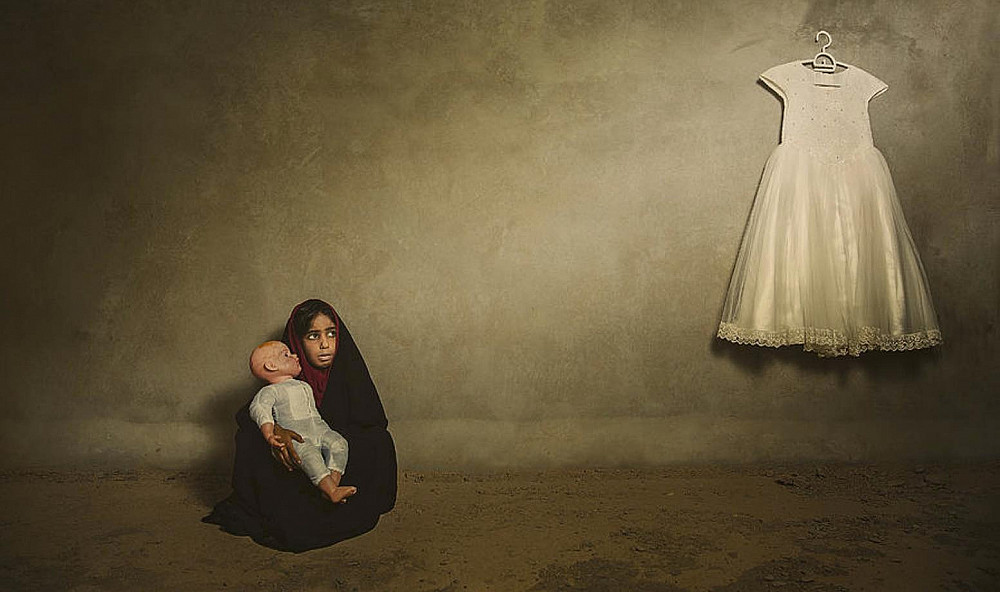Every child deserves an opportunity to fully develop their potential, to enjoy their childhood and to grow up in a healthy environment. Unfortunately, the well-known phenomenon of child marriage stands in the way. Child marriage often compromises a girl’s development, poses great risk to their health and leads to isolation from family, friends and communities. Ending child marriage is essential to enable millions of adolescent girls the opportunity for a better life and to realize their full potential. Child marriage is any formal or informal union (when parties live as if married) where at least one of the couples is under 18 years of age. This practice disproportionally affects girls globally although the child marriage among boys is also widespread is some parts of the world. The prevalence of child marriage among boys is just one sixth that among girls. According to Office of the United Nations High Commissioner for Human Rights (OHCHR), at least 12 million girls are married before they turn 18, yearly. This is 28 girls every minute. Throughout the recent years, actions to eliminate child marriages have been increased on international and national levels. Despite the progress, it remains far too common.
United Nations Children's Fund (UNICEF) collected the data about child marriages around the world. According to UNICEF, globally, approximately 21% of women were married before the age of 18 and 650 million girls and women alive today are or were married as children. A third of them were married before their 15th birthday. Sub-Saharan Africa has the highest rate of child marriage with 37%. In Nigeria, 76% of girls are placed in the child marriage before they turn 18; Followed by Central African Republic with 68% and Chad with 65%.
Responding to this harmful practice is a global concern and cannot be solved by countries working individually. For decades, the debate over how to combat child marriage has raged, resulting in several important agreements, including The Convention on the Elimination of All Forms of Discrimination against Women and the African Charter on the Rights and Welfare of the Child. Despite the fact that marriage is not specifically addressed in the Convention on the Rights of the Child, it is connected to several other rights, including the right to freedom of expression, the right to be protected from all forms of abuse, and the right to be protected from harmful traditional practices.
Child marriage is a fundamental violation of human rights which places children at the high risk of violence and abuse, often resulting in threat to their health or live. Early pregnancies are one of the most dangerous consequences of this practice. Children are not physically or mentally prepared to become mothers. In fact, among adolescent girls aged 15 to 19, problems during pregnancy and childbirth are the most frequent cause of death worldwide. Although the key reasons behind child marriage are complex, it is manly motivated by poverty and lack of education. In poverty-stricken nations, girls are often seen as financial burdens to their families, where boys are seen as potential wage earners. The families living in harsh economic situations, receive ‘bride price’ in exchange of their daughter. Simply put, child marriage is the family’s way of making their economic burden less severe. Gender stereotypes and cultural norms also uphold the practice. Gender discrimination disproportionally effects girls globally. In most cultures, men are seen as superiors and are placed in a dominant position in all areas of economic, social and political life. A girl is more likely to experience unequal treatment in her rights, in personal autonomy, in sexual rights and in education. Women’s roles are tightly intertwined with expectations around motherhood and domestic responsibilities. While the practice of child marriage is more common among girls than boys, it is a violation of rights regardless of sex.
Schools play an important role in hindering the practice of child marriage. Girls who aren’t in school face a greater risk of becoming child brides. However, even for those in schools, after marriage, their access to education is very limited to domestic burdens, childbearing and social norms that view marriage and schooling as incompatible. According to the international Center for Research on Women, the education a girl receives is the strongest predictor of the age she will marry, girls with higher level of schooling are less likely to marry as children: “ In Mozambique, some 60 percent of girls with no education are married by 18, compared to 10 percent of girls with secondary schooling and less than 1 percent of girls with higher education; In Senegal, 41 percent of girls with no education are married as children, whereas only 14 percent of girls with a primary education marry as children; In Nicaragua, 45 percent of girls with no education are married before they turn 18, compared to 28 percent of girls with primary education, 16 percent of girls with secondary education and 5 percent of girls with higher education.
How Did the COVID-19 Pandemic Affect the Progress?
The Covid-19 pandemic has quickly turned from health crisis into unprecedented social and economic crisis, severely disturbing lives of all people, especially people who live in countries with higher rates of poverty. The rise of child marriage throughout the COVID-19 pandemic was predictable. The pandemic has significantly affected efforts of international organizations and programs towards ending child marriages. Social distance measures and lockdowns made the situation even worse. Closure of schools, a decrease in access to sexual and reproductive information, economic shocks highly increased the risks of forcing children into marriage. As the result of pandemic, up to 10 million more girls will be at risk of becoming child brides.
Despite the hindrance caused by the pandemic, the world aims to eliminate the harmful practice of child marriage by the year 2030. The Global Programme to End Child Marriage was launched by UNICEF and UNFPA in 2016. It is actively supported by the Governments of Belgium, Canada, Italy, the Netherlands, Norway, and the United Kingdom, the European Union and Zonta International and operates in 12 of the most high-prevalence or high-burden countries: Bangladesh, Burkina Faso, Ethiopia, Ghana, India, Mozambique, Nepal, Niger, Sierra Leone, Uganda, Yemen and Zambia. The Program actively promotes human rights to prevent child marriages and enables children to achieve their aspirations through education and alternative pathways. Some notable achievements of the program include: Supporting 14,000 adolescent girls in Burkina Faso with school materials; In Uganda, engaging locals to facilitate dialogs on sexual and reproductive health, the rights of girls and women, gender-based violence and child marriage; In Bangladesh, equipping 480 child journalists with the skills to generate video content to report on child marriage, gender equality and girls’ empowerment. The results are encouraging. Overall, 25 million child marriages have been prevented in the last decade thanks to progress.
Photo by Fathi Aldarwish

